#a.d. 1515
Text



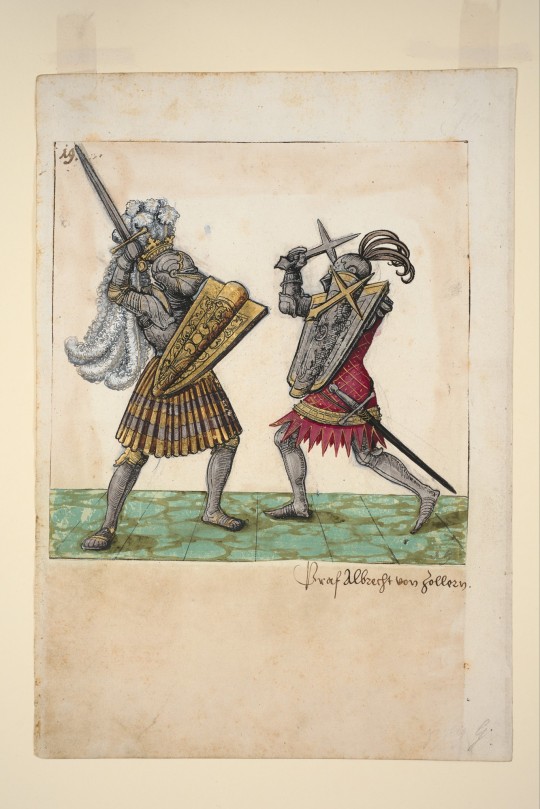
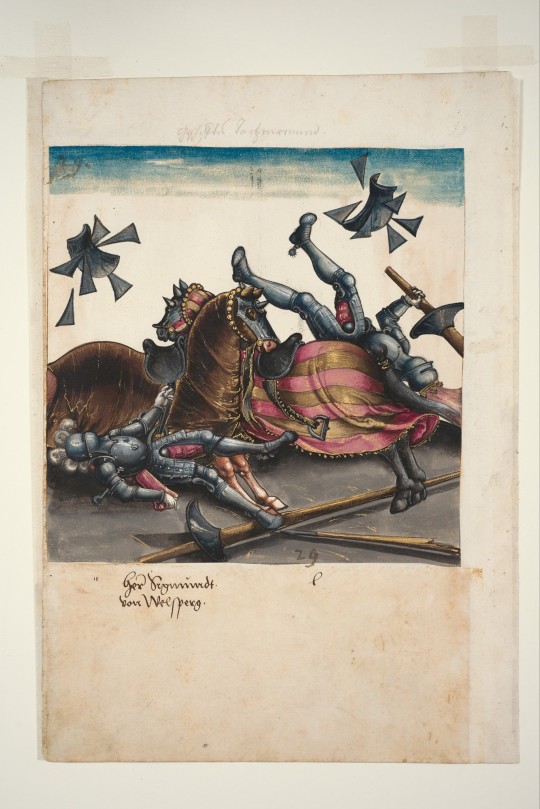
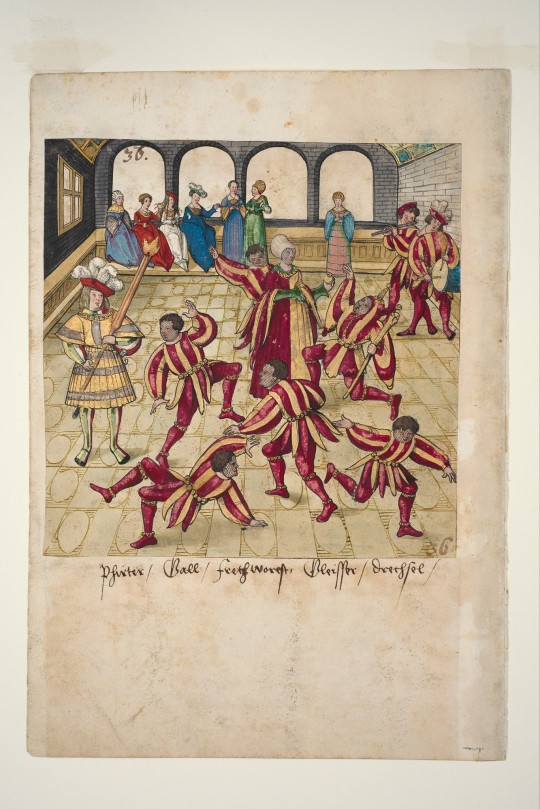
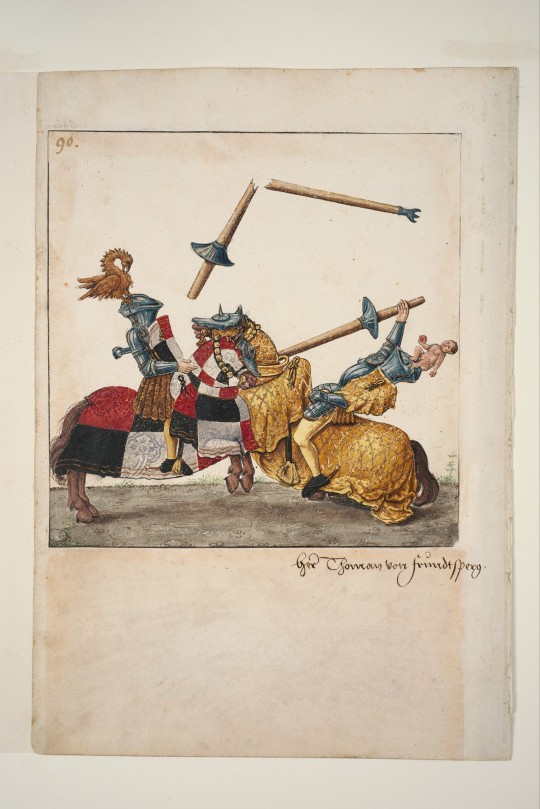
~ "Freydal": Tournament book of Emperor Maximilian I.
Culture: South German
Date: A.D. 1512-1515
Medium: 255 gouaches heightened with gold and silver in leather strap: paper; leather.
• From the source: The "Freydal" describes the tournaments during Maximilian's knightly love journey.
#history#museum#16th century#renaissance#freydal#tournament#horses#competition#Maximilian I#book#antique book#gouache#a.d. 1512#a.d. 1515
417 notes
·
View notes
Text
Why is Wednesday spelled that way?

Randy Roshi · (Quora)
Follow
I teach college courses in English linguistics and writing.
“Wednesday” is a very old word, going back to times so long ago as to predate our modern ideas about spelling. I’ve been looking into the OED for some attestations of the word, and here is a representative (but not complete) list:
wodnesdæg (990 A.D.)
Wodnesdei (1123)
Weodnesdei (1225)
Wendesdei (1300)
wodnes day (1325)
Wednesday (1450)
wonysday (1475)
Wenysday (1500)
wednysday (1515)
Wednesdaye (1562)
wensdaie (1574)
Wensday (1616)
Weddinsday (1639)
Wednesday (1681)
All the OED’s attestations following 1681 are spelled the same as that last one. Around that time, modern ideas about spelling were getting established. In older times, writers did their best to represent the way words were pronounced. Then, as now, people were likely to encounter a wide variety of pronunciations, but were inclined to write in a way that recorded whichever pronunciations were highest in prestige for their own time and place.
Wednesday got its name from Odin, or Wodin, one of the Norse gods. The “es” at the end of his name is the same possessive “s” that we still use today, although now we always drop the vowel and pop in an apostrophe.
The name “Wodin” got shortened to “Wodn” through a process called syncope. Then the “o” changed to “e” because of something called vowel harmony. Although vowel harmony doesn’t take place in modern English as a regular process, it was quite regular in Old English times. It meant that the vowel sound in “day” had an influence on the preceding vowel “o” in “Wodn,” changing it to “e.”
16 notes
·
View notes
Photo
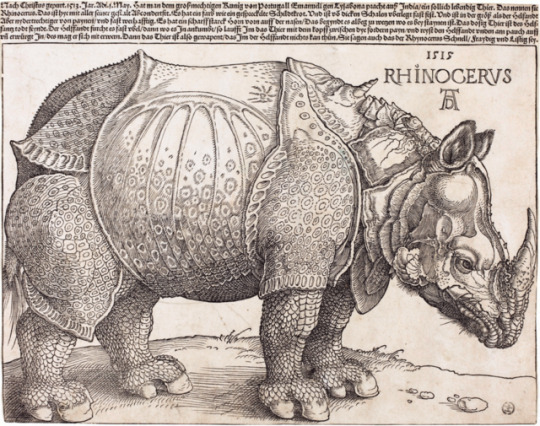


1 Albrecht Durer (1471-1528) German Rhinoceros (1515) woodcut 23.5×29.8cm
A Sky Sherwin (2016) theguardian.com
Monster hit
Albrecht Dürer had a showman’s instincts for killer subject matter. When history’s greatest print-maker decided to create an image of the rhinoceros that had visited Lisbon in 1515, it became one of the most influential animal pictures ever.
Prints charming
Perhaps anticipating high demand, Dürer rendered the animal not as an engraving, but a cheaper woodcut, which meant it could be quickly and easily reproduced.
Animal magic
Are those shoulders and flanks or plates of armour? Dürer had never seen his battleship of an animal in the flesh. His woodcut is derived from a written description and sketch by an unknown artist. It combines his passion for science with his gift for the awesome and fantastic.
Reality check
It’s a pre-eminent example of art besting reality. In Europe, Dürer’s rhino was taken to be the real deal well into the 18th century, when actual rhinos toured the continent and dispelled the illusion. Prior to that it inspired work as diverse as illustrations in naturalist books, the Duke of Florence’s emblem, and a relief sculpture on the doors of Pisa cathedral.
B metmuseum.org
In a detailed and commanding woodcut, Dürer records the arrival in 1515 of the first rhinoceros in Europe since the third century A.D. (above). Although Dürer's depiction is captivating, it is not faithful to nature, and it had a profound impact on subsequent depictions of the rhinoceros in natural histories, paintings, and the decorative arts until the eighteenth century.
2 C17th bronze Pisa Cathedral, Italy
3 Emblem of Alessandro de' Medici (1510-37)
the motto: Non buelvo sin vencer; old Spanish: I shall not return without victory
2 notes
·
View notes
Text
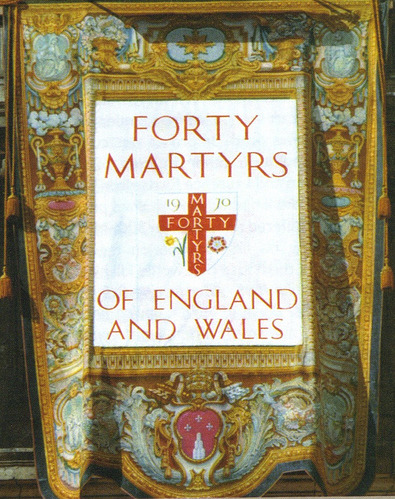
SAINTS DECEMBER 01
St. Edmund Campion. Edmund was born in London, the son of a bookseller. He was raised a Catholic, given a scholarship to St. John's College, Oxford, when fifteen, and became a fellow when only seventeen. His brilliance attracted the attention of such leading personages as the Earl of Leicester, Robert Cecil, and even Queen Elizabeth. He took the Oath of Supremacy acknowledging Elizabeth head of the church in England and became an Anglican deacon in 1564. Doubts about Protestantism increasingly beset him, and in 1569 he went to Ireland where further study convinced him he had been in error, and
he returned to Catholicism. Forced to flee the persecution unleashed on Catholics by the excommunication of Elizabeth by Pope Pius V, he went to Douai, France, where he studied theology, joined the Jesuits, and then went to Brno, Bohemia, the following year for his novitiate. He taught at the college of Prague and in 1578 was ordained there. He and Father Robert Persons were the first Jesuits chosen for the English mission and were sent to England in 1580. His activities among the Catholics, the distribution of his rations at the University Church in Oxford, and the premature publication of his famous Brag (which he had written to present his case if he was captured) made him the object of one of the most intensive manhunts in English history. He was betrayed at Lyford, near Oxford, imprisoned in the Tower of London, and when he refused to apostatize when offered rich inducements to do so, was tortured and then hanged, drawn, and quartered at Tyburn on December 1 on the technical charge of treason, but in reality because of his priesthood. He was canonized by Pope Paul VI in 1970 as one of the forty English and Welsh Martyrs.
Bl. Alexander Briant, 1581 A.D. Missionary and martyr, one of the English priests slain in the reign of Queen Elizabeth I. Alexander was born in Somerset, England, circa 1556 , and entered Oxford University at a young age. He was called "the beautiful Oxford youth" because of his handsome appearance and
the radiance of his holiness. Alexander converted to Catholicism at Oxford and met Richard Holtby, following Holtby to the English seminary college at Reims, France. He was ordained a priest there on March 29, 1578. Returning to England, Alexander worked in Somerset and was caught up in a search by British authorities in April 1581. Taken to the Tower of London, he was subjected to inhuman tortures but did not reveal the names of other priests. He also wrote to the Jesuit Fathers, asking permission to join. He was accepted. In November 1581, he was condemned to death by an English court. Again Alexander suffered hideous tortures and died on December 1, 1581, at the age of twenty-five.
Bl. John Beche, 1539 A.D Martyr of England and a friend of St. John Fisher and St. Thomas More. John was abbot of Coichester Abbey. Benedictine, he received a doctorate from Oxford in 1515. He took the Oath of Supremacy in 1534, but then saw his own abbey being plundered. The deaths of Sts. John Fisher and Thomas More horrified him as well. When he refuted King Henry VIII’s right to suppress the English monasteries, he was arrested for treason and hanged, drawn, and quartered at Colchester. John was beatified in 1895.
Bl. Richard Langley, 1586 A.D. English martyr. A member of the gentry, he was born at Grimthorpe, where he had extensive estates, as he did in Riding. He was arrested for giving shelter to Catholic priests and hanged, drawn, and quartered at York on December 1. He was beatified in 1929.
St. Natalia of Nicomedia, Roman Catholic Martyr of Nicomedia, modem Turkey She cared for Christian prisoners awaiting martyrdom during the persecutions of Emperor Diocletian.Dec 1
Bl. Anwarite Nangapeta, Roman Catholic Nun. She was killed during Congo's civil war at the Simba revolt in 1964 by a soldier, Colonel Pierre Colombe, when she resisted his attempted rape.Dec. 1
Blessed Charles Eugène de Foucauld was a French Roman Catholic religious and priest living among the Tuareg in the Sahara in Algeria. He was assassinated in 1916 outside the door of the fort he built for the protection of the Tuareg. Dec.1
St. Grwst, 7th century. A Welsh saint honored at Llanrwst, Clwyd, Wales.
ST. NAHUM, PROPHET
St. Nahum the Prophet St. Nahum the Prophet Around 612 BC, the minor prophet Nahum prophesied against Nineveh, the capital of the Assyrian empire. Assyria had conquered and cruelly ruled much of the Middle East for 300 years, and in 622 conquered the northern Kingdom of Israel and deported its people. Dec 1
St. Eligius, Roman Catholic layman was very generous to the poor, ransomed many slaves, and built several churches and a monastery at Solignac. Feastday: December 1 https://www.vaticannews.va/en/saints/12/01/st--eligius--bishop-of--noyon.html
0 notes
Photo

The Sistine Chapel
Tapestry of the lower wall (1515-1520 Anno Domini) by Raphael (1483 –1520 A.D.)
0 notes
Text
European Tapestry Production and Patronage 1400–1600
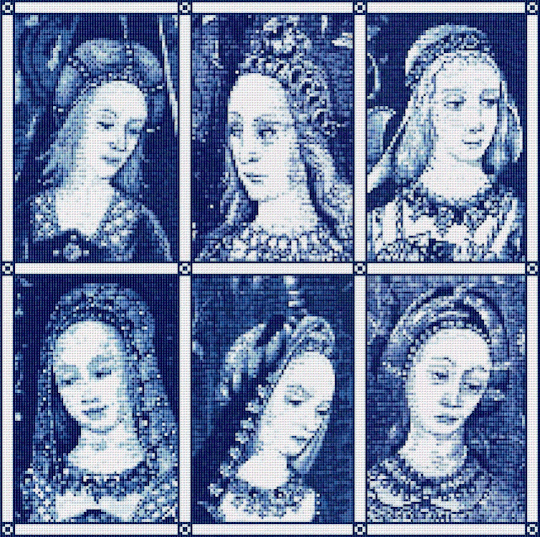
wealthy patrons could commission designs whose subjects embodied celebratory or propagandistic themes. Enriched with silk and gilt metallic thread, such tapestries were a central component of the ostentatious magnificence used by powerful secular and religious rulers to broadcast their wealth and might
from early 14th century A.C an industry capable of producing high quality large tapestries took roots in northern france and southern Netherlands (Belgium)
This development was stimulated by:
the availability of skilled weavers and dyers
by the existence of local guilds that supported and encouraged the development of this nascent industry
by the commissions of local patrons
By the mid-fifteenth century, (1450 A.D) numerous tapestry workshops existed in the low countries in towns such as:
Arras

Tournai
Lille
Brussels

From these centers, tapestries were exported throughout Europe
During the last quarter of the 1475 d.C high-quality Netherlandish production was increasingly dominated by the workshops in Brussels.
This was the result of three factors:
the decline of the industry in Arras and Tournai;
the emergence of Brussels as the principal seat of the Burgundian court in the Netherlands
the monopoly that the Brussels artists’ Guild of Saint Luke secured in 1476 over the fabrication of figurative tapestry cartoons

The Battle with the Sagittary and the Conference at Achilles' Tent (from Scenes from the Story of the Trojan War) ca. 1470–90
The conservative tendency to make extremely rich in details tapestries was challenged by a set of ten tapestries traditionally known as the Acts of the Apostles (1516–21) that was commissioned by Papa leone X in 1515 designed by raffaello sanzio

The first Netherlandish painter whose tapestry designs reflect an informed response to the aesthetics of the Italian Renaissance was Bernaert van Orley, during the 1520s

The Last Supper ca. 1525–28- Bernaert Van Orley
He forged a style that combined elements of the Netherlandish tradition, such as:
multiple narrative and complex anecdotal, decorative, and landscape detail (attention to details)
with the italian traditions
the visualization of each scene as a realistic presentation of a moment of physical or emotional drama embodied by lifesize figures acting in clearly defined perspectival settings
During the second quarter of the sixteenth century,(1525-1550 A.D) we find technical and artistic achievements. A number of smaller enterprises were set up elsewhere in Europe.

The Unicorn Rests in a Garden (from the Unicorn Tapestries)1495–1505
🇮🇹 In Italy:
there were workshops established by Ercole II d’Este in Ferrara in 1536 where designs by dosso dossi and Giulio Romano, among others, were produced.
In 1539, a workshop was also established in Mantova by Federigo Gonzaga
A number of the weavers involved in these workshops subsequently relocated to Florence when Cosimo I de' Medici established two workshops in 1545.
Although the workshops in Mantua and Ferrara were defunct by, respectively, 1563 and 1582, the Florence workshops continued
The Decline
Religious persecution had cast its shadow over the Netherlandish industry from the late 1520s
During the 1530s and 1540s, increasing numbers of Flemish weavers relocated to towns in the Germanic states that were more tolerant of their beliefs
The number of migrants was to increase dramatically during the late 1560s as Philip II of Spain sought to repress the reform movement in the Netherlands.
With the arrival of the Duke of Alba and his army in 1568 and the institution of the Council of Troubles, this exodus turned into a flood as weavers migration emigrated to more tolerant regions in the northern Netherlands (Holland), the Germanic states, France, and England
Although production did continue during the late sixteenth century, the tapestries made during this era are of much lower quality
new centers of importance emerged in:
Delft
Paris
Munich
Flemish weavers were eventually lured across Europe, and this transfer of skill led to the success of the Gobelins factory in Paris that finally stole Flanders’s crown in the late 1700s
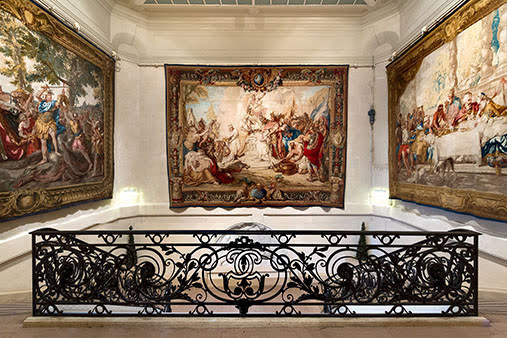

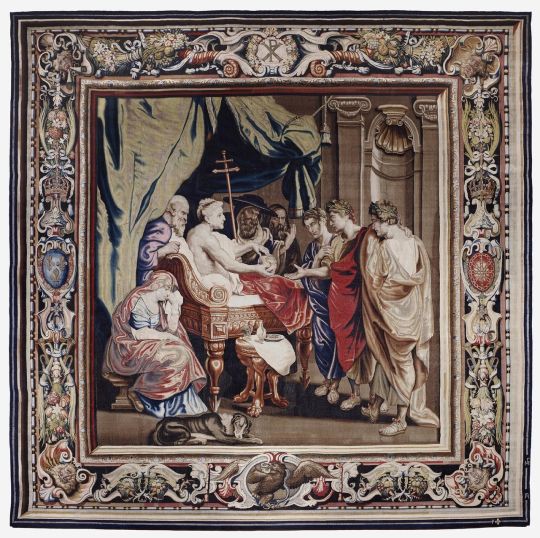
#dutch#tapestry#middle ages#medieval art#italian renaissance#renaissance art#renaissance aesthetic#renaissance#belgian art#belgium#netherlands#dutch langblr#studyblr#dark academia#academia aesthetic#study notes#metmuseum#dutch language#medievalart#brussels#delft#tournai
81 notes
·
View notes
Photo

https://archive.org/details/artofwarinmiddle00omanuoft/page/n7/mode/2up
CHAPTER I. THE TRANSITION FROM ROMAN TO MEDIAEVAL FORMS IN WAR (A.D. 378-582). Disappearance of the Legion. Constantine's reorganization. The German tribes. Battle of Adrianople. Theodosius accepts its teaching. Vegetius and the army at the end of the fourth century. The Goths and the Huns. Army of the Eastern Empire. Cavalry all-important . . . 3-14
CHAPTER II. THE EARLY MIDDLE AGES (A.D. 476-1066). Paucity of Data for the period. The Franks in the sixth century. Battle of Tours. Armies of Charles the Great. The Franks become horsemen. The Northman and the Magyar. Rise of Feudalism. The Anglo-Saxons and their wars. The Danes and the Fyrd. Military importance of the Thegnhood. The House- Carles. Battle of Hastings. Battle of Durazzo 15-27
CHAPTER III. THE BYZANTINES AND THEIR ENEMIES (A.D. 582-1071).
1. Character of Byzantine Strategy. Excellence of the Byzantine Army. Scientific study of the art of war. Leo's ' Tactica.' Wars with the Frank. With the Turk. With the Slav. With the Saracen. Border warfare of Christendom and Islam. Defence of the Anatolic Themes. Cavalry as a defensive force. Professional and unchivalrous character of Byzantine officers . . 28-38
2. Arms, Organization, and Tactics of the Byzantines. Reorganization of the Army of the Eastern Empire By Maurice. Its composition. Armament of the Horseman, A.D. 600-l000. Armament of the Infantry. Military Train and Engineers. The Officers. Cavalry tactics. Leo's ideal line of battle. Military Machines and their importance . . 38-48
CHAPTER IV.THE SUPREMACY OF FEUDAL CAVALRY (A.D. 1066-1346). Unscientific nature of feudal warfare. Consequences of head-long charges. Tactical arrangements. Their primitive nature. Non-existence of strategy. Weakness of Infantry. Attempts to introduce discipline. Rise of Mercenaries. Supreme importance of fortified places. Ascendency of the defensive. The Mediaeval siege. Improvement of the Arts of Attack and Defence of fortified places. General character. The Crusades ... . 49-61
CHAPTER V. THE SWISS (A.D. 1315-1515).
i. Their Character, Arms, and Organization.
The Swiss and the Ancient Romans. Excellence of system more important than excellence of generals. The column of pikemen. The halberdier. Rapidity of the movements of the Swiss. Defensive armour. Character of Swiss armies 62-69
2. Tactics and Strategy.
The 'Captains' of the Confederates. The Echelon of three columns. The 'Wedge' and the 'Hedgehog' formations 70-73
3. Development of Swiss Military Supremacy.
Battle of Morgarten. Battle of Laupen. Battle of Sempach. Battle of Arbedo. Moral ascendency of the Swiss. Battle of Granson. Battle of Morat. Wars of the last years of the fifteenth century 73-87
4. Causes of the Decline of Swiss Ascendency. The tactics of the Swiss become stereotyped. The Landsknechts and their rivalry with the Swiss. The Spanish Infantry and the short sword. Battle of Ravenna. Fortified Positions. Battle of Bicocca. Increased use of Artillery. Battle of Marignano. Decay of discipline in the Swiss Armies and its consequences 87-95
CHAPTER VI. THE ENGLISH AND THEIR ENEMIES (A.D. 1272-1485). The Long-bow and its origin, Welsh rather than Norman. Its rivalry with the Cross-bow. Edward I and the Battle of Falkirk. The bow and the pike. Battle of Bannockburn and its lessons. The_French Knighthood and the English Archery. Battle of Cressy Battle of Poictiers. Du Guesclin and the English reverses. Battle of Agincourt. The French wars, 1415-1453. Battle of Formigny. Wars of the Roses. King Edward IV and his generalship. Barnet and Tewkesbury. Towton and Ferrybridge . 96-123
CHAPTER VII. CONCLUSION. Zisca and the Hussites. The Waggon-fortress and the tactics depending on it. Ascendency and decline of the Hussites. Battle of Lipan. The Ottomans. Organization and equipment of the Janissaries. The Timariot cavalry. The other nations of Europe. Concluding remarks . . 124-134
19 notes
·
View notes
Text
El Movimiento Independentista del País Vasco – James
En el final publicación del blog, voy a argumentar cómo el País Vasco se convirtió en una comunidad autónoma de España. El País Vasco está en el norte de España. El paisaje es hermoso: existen costas rocosas, fincas tranquilas, e impresionantes vistas del océano. Sin embargo, la historia de la región es más complicada, y contiene periodos de orgullo, opresión, y lucha.
El grupo étnico vasco se origina del País Vasco, una región conocida por los lugareños como Euskal Herria. Investigaciones recientes señalan que las personas vascas son descendientes de agricultores neolíticos. Como consecuencia del terreno áspero del País Vasco, los granjeros se aislaron de otras poblaciones europeas. Este aislamiento creó la cultura distinta de la región. Por ejemplo, en el año 196 B.C., los romanos invadieron el País Vasco. A pesar de esto, las personas vascas podrían retener la mayoría de sus tradiciones y leyes bajo un gobierno extranjero.
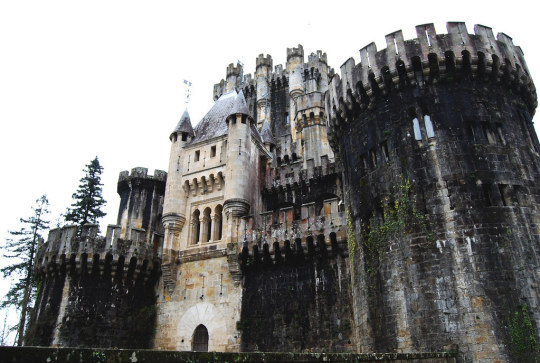
Imagen: Sergi García
Durante el año 842 A.D., el País Vasco se convirtió una parte del Reino de Navarra, una nación medieval gobernada por monarcas. Después, en el año 1515, la mayoría de Navarra fue anexada a Castilla, que ahora es España. Mientras el gobierno autónoma del País Vasco existió durante el reino de los Romanos y Navarras, finalmente los españoles lo abolieron en el año 1839. Como resultado, un movimiento nacionalista vasca surgió y creció durante el siglo 19. Algunas personas vascas abogaron por una nación vasca separada. Como respuesta, durante la guerra civil española, Francisco Franco prohibió el uso de la lengua vasca, sacó derechos de los vascos, y bombardeó la ciudad vasca de Guernica.

Imagen: http://nowinbuenosaires.blogspot.com/2010/08/el-pais-vasco-or-what-do-kurt-and-st.html
El País Vasco sufrió bajo el régimen franquista. Debido a esto, un grupo de nacionalistas vascos crearon el Euskadi Ta Askatasuna (ETA) en 1959. Este grupo separatista llevó a cabo una campaña terrorista que mató a más de 800 personas. El ETA finalmente se disolvió en Mayo 2018. En ese tiempo, España ya había concedido un poquito de autonomía política y económica al País Vasco. También, hoy en día, España reconoce la identidad vasca separada. Mientras el País Vasco no tiene un capital real, la ciudad de Vitoria-Gasteiz es la capital efectiva de la región. También, algunos elementos culturales vascas han sido revividos, incluyendo la lengua Euskera. A pesar de esto, muchos vascos todavía quieren una nación totalmente autónoma.
Conclusión
El movimiento de independencia para el País Vasco es diferente que el de Cataluña. Mientras el gobierno de España no ha apoyado movimientos de independencia en Cataluña, ha dado un poquito de soberanía al País Vasco y ha reconocido la región como una parte autónoma de España. Sin embargo, en 2009, la independencia del País Vasco estaba amenazada. Por primera vez en aproximadamente 30 años, una coalición de partidos políticos que no apoyaron la autonomía del País Vasco gobernaron la región. Hoy en día, el movimiento de independencia vasca es más popular que nunca. A pesar de esto, la región todavía es una parte de España y no tiene autonomía completa.
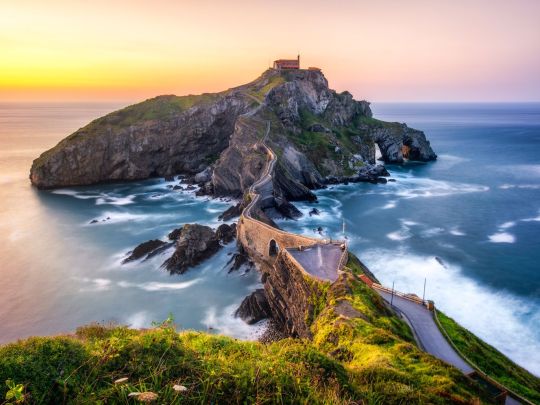
Imagen: Omella Eloi
Despedida
En este proyecto, JP y yo hemos explorado las historias y culturas de múltiples regiones de España. Hemos aprendido que mientras España es un país unificado, existen diferentes culturas y costumbres que se originan en las historias ricas de las regiones. Este proyecto no solamente nos ha enseñado hechos de España; nos ha mostrado la diversidad de culturas y personas en un país que nos pareció uniforme. Por esto, ahora sabemos que es importante no suponer que todo un país es exactamente el mismo.
Fuentes:
https://www.britannica.com/place/Basque-Country-region-Spain
https://www.nationalgeographic.com/history/article/how-basques-became-autonomous-community-spain
2 notes
·
View notes
Link
Iron maidens are one of the most notorious torture devices out there. But are they real?
The answer is no — and yes. The widespread medieval use of iron maidens is an 18th-century myth, bolstered by perceptions of the Middle Ages as an uncivilized era. But the idea of iron-maiden-like devices has been around for thousands of years, even if evidence for their actual use is shaky.
The iron maiden has been described as a human-sized box festooned with interior spikes. The hapless torture victim would be forced inside and the door would shut, driving the spikes into the body. The spikes were supposedly short and positioned so that the victim wouldn't die quickly, but would bleed out over time. Creepy, right? [Medieval Torture's 10 Biggest Myths]
And basically fictional. The first historical reference to the iron maiden came long after the Middle Ages, in the late 1700s. German philosopher Johann Philipp Siebenkees wrote about the alleged execution of a coin-forger in 1515 by an iron maiden in the city of Nuremberg. Around that time, iron maidens started popping up in museums around Europe and the United States. These included the Iron Maiden of Nuremberg, probably the most famous, which was built in the early 1800s and destroyed in an Allied bombing in 1944.
Siebenkees wasn't the first to dream up a terrible box full of nails as a torture device, though. "The City of God," a Latin book of Christian philosophy written in the fifth century A.D., tells a tale of torture of the Roman general Marcus Atilius Regulus, who was locked in a nail-studded box. Marcus didn't die of being impaled, though; he was forced to stay awake lest the nails pierce his skin, and eventually died of sleep deprivation.
Greek historian Polybius, who lived around 100 B.C., spread a related story. Polybius claimed that the Spartan tyrant Nabis constructed a mechanical likeness of his wife Apega. When a citizen refused to pay his taxes, Nabis would have the faux wife wheeled out.
"When the man offered her his hand, he made the woman rise from her chair and taking her in his arms drew her gradually to his bosom," Polybius wrote. "Both her arms and hands as well as her breasts were covered with iron nails … so that when Nabis rested his hands on her back and then by means of certain springs drew his victim towards her … he made the man thus embraced say anything and everything. Indeed by this means he killed a considerable number of those who denied him money."
It's difficult to tell if any of this is true — ancient historians have a way of exaggerating —but the idea of iron-maiden-like devices clearly did not originate with the Middle Ages. The period has been rather unfairly associated with other elaborate torture devices, too, said Peter Konieczny, the editor of the magazine Medieval Warfare, who recently wrote about the myths of medieval torture at medievalists.net. The Pear of Anguish, a sort of speculum supposedly inserted into orifices and painfully winched open? No record of use in the Middle Ages. It might have been a sock-stretcher. How about the rack? There are some records of use during the Middle Ages, but the device (which supposedly would rip its victims joints apart) was conceived of in the days of Alexander the Great.
Torture did happen in the Middle Ages, Konieczny told Live Science. It was sometimes used to extract confessions of guilt before an execution, on the justification that confessing sin before death would save the person's soul from an eternity in Hell.
"There was an idea in the Middle Ages that you were really honest when you were under a lot of punishment, under a lot of strain," Konieczny said. "That the truth comes out when it starts to hurt."
But torture wasn't usually all that elaborate.
"The more common torture was to just kind of bind people up with rope," Konieczny said.
But myths about over-engineered pain and punishment still resonate. In 2013, for example, local journalism site Patch reported that a history of torture exhibit at the San Diego Museum of Man had sent attendance at the museum up 60 percent over the previous year, helping pull the institution out of a financial hole.
Most of the myths about medieval torture arose in the 1700s and 1800s, when people were motivated to see the people of the past as more brutal than those of the modern-day, Konieczny said. "You get that idea that people were much more savage in the Middle Ages, because they want to see themselves as less savage," he said. "It's so much easier to pick on people who have been dead for 500 years."
Exaggeration tends to build on itself over time, Konieczny said, leading to 18th-century myths that persist as fact today. These myths aren't restricted to torture; a May 2016 article in the Public Medievalist argues that the flail, the stereotypical ball-and-chain weapon, wasn't really a staple of the medieval battlefield at all. Many museum examples are from later eras, and the only evidence of the flail in manuscripts comes from illustrations of fantastical battles; they don't show up, for example, in armory catalogues from the era.
A similar sort of exaggeration has occurred over the Siege of Baghdad in 1258, Konieczny said. By the time of the U.S. invasion of Iraq in 2003, it was common to hear that millions had died when the Mongols took the city. Contemporary sources, however, refer to tens of thousands dead, not millions.
"Then, about 20 years later, you get this letter where one Mongol leader is writing, boasting how he captured Baghdad and killed 200,000 people," Konieczny said. Fifty years later, histories start talking about 800,000 deaths, and then, over the next couple centuries, the numbers rise to a million or more.
Speaking of Iraq, that country provides a sad footnote to the iron maiden myth. In 2003, Time Magazine reported the discovery of a real iron maiden at the Iraqi National Olympic committee compound in Baghdad. Saddam Hussein's son, Uday Hussein, was once the head of the committee and the country's soccer federation, and athletes reported that he would humiliate, beat and torture underperformers. Time reported that the iron maiden in Baghdad was "worn from use," and an AP video shows the device, but it's unclear whether there are any eyewitness accounts of the iron maiden being used.
1 note
·
View note
Text
MARY, I LOVE YOU

MARY, I LOVE YOU
by Saint Philip Neri
(A.D. 1515-1595)
Mary, I love you.
Mary, make me live in God,
with God,
and for God.
Draw me after you, holy mother.
O Mary, may your children persevere in loving you.
Mary, Mother of God and mother of mercy,
pray for me and for the departed.
Mary, holy Mother of God,
be our helper.
In every difficulty and distress,
come to our aid, O Mary.
O Queen of Heaven,
lead us to eternal life with God.
Mother of God,
remember me,
and help me always to remember you.
O Mary, conceived without sin,
pray for us who have recourse to you.
Pray for us,
O holy Mother of God,
that we may be made worthy of the promises of Christ.
Holy Mary, Mother of God,
pray to Jesus for me.
photo: Madonna and Child Saint Leonard church altarpiece circa 1854- Frankfurt, Germany - artist Anonymous
#BVM #illoveMary #SaintPhilippNeri #wrrtotustuusfiat
0 notes
Photo

Chronology Of The Six Goswamis November 25, 2015 Submitted by Yashoda-nandana das Sri Chaitanya spent the first 24 years of his life in Navadvipa, West Bengal. Most of Chaitanya’s followers knew him since his early years. For example Advaita (1454-1550 CE), a leading figure among the Vaishnavas of Navadvipa from before Chaitanya’s birth, and Nityananda (1473-1545 CE), a charismatic and eccentric saint, arose to key roles in creating the future of Chaitanya’s tradition. Gadadhara Pandit and Vakresvara Pandit, Chaitanya’s companions since his childhood, Narahari Cakravartin of Sri Khanda, Nityananda’s wife Jahnava, along with many others, contributed their share in initiating the tradition. Goswami Chronology 1489 Rupa Goswami appearance 1511 Jiva Goswami appearance 1515 Sri Chaitanya visits Vrindavan 1516 Rupa and Sanatana come to Vrindavan 1531 Raghunatha Bhatta Goswami comes to Vrindavan 1533 Sri Chaitanya Mahaprabhu disappearance 1535 Jiva Goswami comes to Vrindavan 1542 Damodara Deity, first seva puja 1542 Radha-Raman Deity, first seva puja 1545 Jiva Goswami buys land at Radha Kund 1552 Rupa Goswami writes Nectar of Devotion (Bhakti-rasamrta Sindhu) 1558 Jiva Goswami buys land at Seva Kunj/ Sanatana Goswami disappearance 1564 Rupa Goswami disappearance 1570 Emperor Akbar meets Jiva Goswami in Vrindavan 1580 Radha-Madanmohan temple opens 1581 Chaitanya Caritamrta, completed by Krishna das Kaviraj at Shyama Kund 1582 Krishna das Kaviraj disappearance 1582 Jiva Goswami orders Narottama, Srinivas, and Shyamananda go preach 1583 Raghunatha das Goswami disappearance 1585 Gopal Bhatta Goswami disappearance 1590 Radha-Govinda temple opens 1592 Jiva Goswami writes Gopal Champu 1608 Jiva Goswami disappearance 1670 Aurangzeb destroys Vrindavan temples 1739 Radha-Damodara Deity returns to Vrindavan from Jaipur 1764 Radha-Damodara Deity moves back to Jaipur and stays Sri Caitanya went to Sri Vrindavana several times and revealed many holy places there. (Caitanya-caritamrta Madhya 1,2,17,18) When Lord Chaitanya first arrived in Vraja, He stayed at brahmana’s house in Mathura. He would walk around Vrindavana every day visiting the sacred places connected with Lord Krishna’s pastimes. Later, Lord Chaitanya moved His residence to Akrura Ghata and would daily visit Imlitala, where He sat looking at the river Yamuna while chanting Hare Krishna and constantly shedding tears in an ecstatic mood of divine love. After a few months (in 1516), Lord Chaitanya left for Jagannatha Puri and directed two of His dearmost followers, Rupa and Sanatana Gosvamis to proceed immediately to Vrindavana, not only to excavate the places of Lord Krishna’s pastimes and build temples but also to write books on the science of bhakti yoga, in order to establish the teachings of Lord Chaitanya for the benefit of all future generations. (CC Adi 7, Madhya 1, 19, Antya 4). Other of the Six Gosvamis later joined them. Even though both Rupa and Sanatana were very important ministers in the government of Bengal, by the divine inspiration of Lord Chaitanya, they completely renounced mundane family life in order to fully serve the mission of Lord Chaitanya. When they first came to Vrindavana, it was just a large forest, and at night they would sleep under the trees. They dressed only in simple kaupins (loincloths), and subsisted on forest roots and dry chapatis obtained by begging alms (madhukari). The Six Gosvamis hardly slept more than two hours a day and spent most of their time in meditation and writing books on the science of bhakti-yoga. Some of their original works, written on parchment leaves, have been preserved and can be seen at the Vrindavana Research Institute http://en.wikipedia.org/wiki/Jiva_Goswami When Jiva was three or four years old, his uncles resigned from their ministerial posts at the court of Alauddin Hussein Shah (ruled 1493–1519 CE) after their initial meeting with Chaitanya Mahaprabhu (1486–1534 CE) and they decided to join his ranks as mendicants. Jiva’s father, Anupama, also met with Chaitanya at this time and followed in the footsteps of his elder brothers and proceeded to travel with Rupa to Vrindavana. Jiva went on to Benares where he studied for some time under the tutelage of Madhusudana Vidyavachaspati, the brother of the famous logician and Vedantist, Sarvabhauma Bhattacharya. Under Vidyavachaspati, Jiva mastered the six systems of Indian philosophy known as Sad Darsana. In 1535 Jiva arrived in Vrindavana where he remained under the tutelage of his uncles, Rupa and Sanatana (by this time his father Anupama had died). He accepted initiation from Rupa Goswami and was taught the esoteric principles of devotion to Krishna. Jiva helped to edit the writings of Rupa and Sanatana and assisted them in their work in propagating Gaudiya Vaishnavism and excavating the lost holy places of Vrindavana. http://www.harekrsna.com/philosophy/bmgs/goswamis/jiva.htm Jiva Gosvami made his appearance in 1455, Sakabdha (1533 A.D.), on the 12th day of the bright fortnight in the month of Bhadra. He disappeared from view at the age of 85 in 1540 A.D., (Sakabdha, 3rd day of bright fortnight, Pausa). Sri Jiva later traveled to Vrindavana, where he joined the company of his two uncles, Sri Rupa and Sri Sanatana. Jiva stayed with Sri Rupa, who taught him Srimad Bhagavatam and gave him mantra initiation. Sri Jvia quickly become conversant with the conclusion of Srimad Bhagavatam, so Sri Rupa engaged him in proof-reading his Bhakti-rasamrta-sindhu. Sri Jiva compiled a commentary on Bhakti-rasamrta-sindhu called Durgama sangamani. Later, in 1476 (Sakabda), Sri Sanatana Gosvami compiled Sri Vaisnava tosani, a commentary on the tenth canto of Srimad-Bhagavatam, which Jiva also proofread. Following Sanatana’s instruction, in 1500 (Sakabda) Sri Jiva compiled a commentary on the Bhagavatam called Laghu Vaisnava tosani. After the passing of Rupa and Sanatana, Jiva Goswami became the foremost authority in the Gaudiya Vaishnava line. In 1542 Jiva established one of the prominent and important temples in the Vrindavana area, the Radha Damodara mandir, installing deities of Radha and Krishna that had been personally carved by Rupa Goswami. At that time he also established the Vishva Vaishnava Raja Sabha (World Vaishnava Association) and the Rupanuga Vidyapitha, an educational facility for Gaudiya Vaishnavas to study the works of Rupa and Sanatana. His erudition and spirituality were so famous that the Moghul emperor Akbarbecame his ardent admirer and donated paper for his writing. In 1558, Jiva instructed his students, Narottama Dasa, Srinivasaand Shyamananda, to go to Bengal and propagate the Gaudiya Vaishnavaphilosophy and to take with them the original manuscripts that had been written by Rupa and Sanatana. Sanatana, or Amara as he was named at birth, was born in Jessore in East Bengal (present-day Bangladesh) in 1488 as the son of Mukunda, the private secretary of the Sultan of Bengal, Jalaluddin Fateh Shah (ruled 1481–1487 CE). Sanatana was the eldest son of Mukunda, and his younger brothers were Santosha (Rupa Goswami) and Srivallabha (Anupama On the death of his father, Sanatana was forced to take up the post of Sakara Mallika (treasurer) to the new ruler of Bengal, Alauddin Hussein Shah (ruled 1493–1519 CE), while his brother Rupa was given the post of Dabir-i-khas (private secretary). Sanatana and Rupa received land from the government for their personal use in Fatehbad, where they built a huge palace. They also built several beautiful mansions at Ramakeli. It was at Ramakeli in 1510 that Sanatana and his two brothers met Chaitanya Mahaprabhu for the first time Sanatana Goswami returned to Vrindavana, where he located various lost holy places. He also established the worship of the deity of Madana-mohana. Soon after Sanatana discovered the deity, a rich officer in the Moghul army named Krishna Dasa Kapura built a temple for Madana-mohan. This later became one of the seven principal temples of Vrindavana. Sanatana Goswami passed away in the year 1558 CE. His samadhi(tomb) is located next to the Madana-mohana temple Gopala Bhatta Goswami (born 1503) is one of the foremost disciples of the Vaishnava saint, Chaitanya Mahaprabhu, and a leading historical figure in the Gaudiya Vaishnava school of Hinduism. He was part of a group of Vaishnava devotees known collectively as the Six Goswamis of Vrindavan, who were influential in establishing the philosophical basis of the Gaudiya tradition in formalised writings. According to biographies such as the Bhakti Ratnakara Gopal Bhatta’s first meeting with Chaitanya Mhaprabhu was in 1510 during Mahaprabhu’s tour of South India. Although of a young age he was given the opportunity to meet with Chaitanya and serve him over a number of months. Such was his love for the saint, that when Chaitanya Mahaprabhu was about to leave, Gopala Bhatta became upset, and for Gopala Bhatta’s sake, Chaitanya then agreed to stay a few more days. Gopal Bhatta Gosvami, one of the six Gosvamis of Vrndavana, as a young boy received the mercy of Lord Caitanya. While touring south India, Lord Caitanya stayed four months at Gopal Bhatta’s house. Gopal Bhatta Gosvami later joined Lord Caitanya’s sankirtana movement. He proved himself an expert in Vaisnava scriptural regulations, wrote Vaisnava books, and established the temple of Sri Sri Radha-Ramana in Vrndavana. (Sri Caitanya-caritamrta, Adi-lila 10.105.) When Chaitanya traveled through South India in 1509-10, he stayed at the house of Venkata Bhatta, the father of Gopala Bhatta, priest ofSrirangam.[1] Venkata and his two brothers, Gopala’s uncles Trimalla and Prabodhananda Sarasvati “were converted from their Sri Vaishnavafaith in Lakshmi–Narayana as supreme to one in Radha Krishna” as Svayam bhagavan http://www.harekrsna.com/philosophy/bmgs/goswamis/gopala-bhatta.htm "Sri Gopala Bhatta Gosvami, the forty-seventh branch, was one of the great and exalted branches of the tree. He always engaged in discourses about love of Godhead in the company of Rupa Gosvami and Sanatana Gosvami.” “Sri Gopala Bhatta Gosvami was the son of Venkata Bhatta, a resident of Srirangam. Gopala Bhatta formerly belonged to the disciplic succession of the Ramanuja-sampradaya but later became part of the Gaudiya-sampradaya. In the year 1433 sakabda (A.D. 1512), when Lord Caitanya Mahaprabhu was touring South India, He stayed for four months during the period of Caturmasya at the house of Venkata Bhatta, who then got the opportunity to serve the Lord to his heart’s content. Gopala Bhatta also got the opportunity to serve the Lord at this time. Sri Gopala Bhatta Gosvami was later initiated by his uncle, the great sannyasi Prabodhananda Sarasvati. Both the father and mother of Gopala Bhatta Gosvami were extremely fortunate, for they dedicated their entire lives to the service of Lord Caitanya Mahaprabhu. They allowed Gopala Bhatta Gosvami to go to Vrndavana, and they gave up their lives thinking of Sri Caitanya Mahaprabhu. When Lord Caitanya was later informed that Gopala Bhatta Gosvami had gone to Vrndavana and met Sri Rupa and Sanatana Gosvami, He was very pleased, and He advised Sri Rupa and Sanatana to accept Gopala Bhatta Gosvami as their younger brother and take care of him. Sri Sanatana Gosvami, out of his great affection for Gopala Bhatta Gosvami, compiled the Vaisnava smrti named Hari-bhakti-vilasa and published it under his name. Under the instruction of Srila Rupa and Sanatana, Gopala Bhatta Gosvami installed one of the seven principal Deities of Vrndavana, the Radharamana Deity. The sevaits (priests) of the Radharamana temple belong to the Gaudiya-sampradaya. Caitanya-caritamrta, Adi lila 10:105 http://www.vnn.org/editorials/ET0407/ET14-8670.html Srila Gopal Bhatta Goswami appeared in 1500 AD (though, according to some authorities, he was born in 1503) as the son of Venkata Bhatta in the town of Srirangam in South India. Their residence was in a village not far from Srirangam called Belagundi. Srila Gopal Bhatta Goswami ended his earthly pastimes on the Krsna Pancami of Asarh of 1507 of the Saka era (1585 AD). His samadhi temple is behind the current Radha Ramana temple. http://iskconchennai.tripod.com/gopal.html Gopal Bhatta (1503-1578) was born in an orthodox Brahman family in South India. His father Vyenkata Bhatta was a priest of the famous Narayana temple of Sri Rangam. Vyenkata Bhatta and his brothers, Prabhodhananda Saraswati and Tirumalla Bhatta were famous for their vast learning and piety. When Caitanya Mahaprabhu had undertaken His walking trip to South India in 1511, He spent the four rainy months of Caturmasa with them and engaged in deep discussion about philosophy and bhakti. http://www.harekrsna.com/sun/features/11-07/features844.htm In the intervening decades between the Chaitanya Bhagavata and the Chaitanya Charitamrita, a number of other less well-circulated hagiographical works were composed, among the most prominent, Kavikarnapura’s Sanskrit poem Krishna- Chaitanyacharitamritam Mahakavyam (c 1542) and the much later dramatic work Chaitanyachandrodaya Natakam (c 1572-79), Lochana Dasa’s Bangla Chaitanya Mangala (c 1570-80), and the popular but controversial Bangla tale by Jayananda also titled Chaitanya Mangala (c 1550-60). Raghunatha Dasa Goswami served Chaitanya for sixteen years at Jagannatha Puri. After which he went to Vrindavan, where he lived for many years at a sacred lake known as Radha-kunda. His bhajana-kutir, or place of worship, still exists there and is visited by many pilgrims to this day. Srila Rupa Gosvami took his birth in 1493 A.D. (1415, Sakabda), and disappeared at the age of 73 in 1564 A.D. (1486, Sakabda). He spent 22 years in householder life, followed by 51 years in Vrndavana. Rupa Gosvami is known as bhakti-rasacarya, an expert in the tastes of pure devotional service. He and his older brother, Srila Sanatana Gosvami, left high posts in the government of Nawab Hussein Shah to join Sri Caitanya Mahaprabhu. Empowered by Lord Caitanya, Srila Rupa Gosvami wrote many books about the science of Krsna Consciousness. A summary study of his Bhakti-rasasmrta-sindhu can be found in “The Nectar of Devotion,” and his Upadesamrta is found in “The Nectar of Instruction”. http://www.harekrsna.com/philosophy/bmgs/goswamis/sanatana.htm Sri Sanatana Gosvami took his birth in 1488 A.D. (1410, Sakabda). As a child, he began his studies along with his brothers, from their maternal uncle’s house in a small village called Sakurma near the capital of Gaura-desa. At the age of 27 he came to live at Braja, and remained there for 43 years. At the age of 70, Srila Sanatana disappeared on the full moon day of Asar in the year 1558 A.D. In the conclusion of his commentary on the Bhagavata, the Laghu-Vaisnava-Toshani, Jiva Goswami describes the ancestral line of his uncle, Sanatana Goswami. This genealogy states that there was a king in Karnataka called Srisarvajana, who was known as Jagadguru due to his learning. Srisarvajana’s descendant, Aniruddha, gave his kingdom equally to his two sons, Harihara and Rupesvara, but Harihara forcibly occupied Rupesvara’s dominion and drove him away. Rupesvara then left Karnataka, taking shelter with King Sikharesvara of Paurastya. He later retired to Navahatta (Naihati near Kalna) in Bengal, where he associated with king Danujamardana. His grandson, Kumaradeva, moved to Bakla Candradvipa (East Pakistan). Rupa, Sanatana, and Anupama were among the many sons born in this brahmana family. As the elder brother of Srila Rupa Gosvami, Sanatana was the topmost among the six Gosvamis of Vrndavana. Lord Caitanya Mahaprabhu instructed him at Varanasi, teaching him the detailed science of devotional service. Lord Caitanya sent Srila Sanatana Gosvami to Vrndavana and gave him a fourfold mission: to uncover the lost sites of Krsna’s pastimes, to install deities of the Lord and arrange for Their worship, to write books on Krsna consciousness, and to teach the rules of devotional life. Srila Sanatana Gosvami, with the help of Srila Rupa Gosvami, fulfilled all parts of this mission. Sri Sanatana Gosvami compiled many scriptures, including: Sri Brhad-bhagavatmrta, Sri Hari-bhakti-vilas and its Dig-darsani-tika, Sri Krsna-lilastava (dasam carit), Sri Bhagavata-tipani (Dasama-tippani) (commentary on Srimad Bhagavatam), Brihat-vaisnava-tosani (Laghu-tosani), and Dasama-carita. Sanatana Goswami’s trancendental position is glorified in Sri Kavi-Karnapura’s Gaura-Ganodesha-Dipika (181): sa rupa-manjari-prestha purasid rati-manjari socyate nama-bhedena lavanga-manjari budhaih “Rupa Manjari’s closest friend, who is know by the names Rati-Manjari and Lavanga-Manjari, appeared in the pastimes of Shri Chaitanya Mahaprabhu as Shri Sanatana Goswami, who is considered to be a personal extension of the body of Shri Chaitanya Mahaprabhu.” “In the First Wave of the book known as Bhakti-ratnakara, it is said that Sanatana Gosvami understood Srimad-Bhagavatam by thorough study and explained it in his commentary known as Vaisnava-tosani. All the knowledge that Sri Sanatana Gosvami and Rupa Gosvami directly acquired from Sri Caitanya Mahaprabhu was broadcast all over the world by their expert service. Sanatana Gosvami gave his Vaisnava-tosani commentary to Srila Jiva Gosvami for editing, and Srila Jiva Gosvami edited this under the name of Laghu-tosani. Whatever he immediately put down in writing was finished in the year 1476 Saka (A.D. 1555). Srila Jiva Gosvami completed Laghu-tosani in the year Sakabda 1504 (A.D. 1583).” Caitanya-caritamrta, Madyam lila 1:35 http://www.harekrsna.com/philosophy/bmgs/goswamis/bhatta-raghunatha.htm Raghunatha Bhattacarya, or Raghunatha Bhatta Gosvami, one of the six Gosvamis, was the son of Tapana Misra. Born in approximately 1425 Sakabda (A.D. 1504), he was expert in reciting Srimad-Bhagavatam, and in the Antya-lila, Chapter Thirteen, it is stated that he was also expert in cooking; whatever he cooked would be nectarean. Sri Caitanya Mahaprabhu was greatly pleased to accept the food that he cooked, and Raghunatha Bhatta used to take the remnants of food left by Sri Caitanya Mahaprabhu. Raghunatha Bhattacarya lived for eight months in Jagannatha Puri, after which Lord Caitanya ordered him to go to Vrndavana to join Sri Rupa Gosvami. Sri Caitanya Mahaprabhu asked Raghunatha Bhattacarya not to marry but to remain a brahmacari, and He also ordered him to read Srimad-Bhagavatam constantly. Thus he went to Vrndavana, where he engaged in reciting Srimad-Bhagavatam to Srila Rupa Gosvami. He was so expert in reciting Srimad-Bhagavatam that he would recite each and every verse in three melodious tunes. While Raghunatha Bhatta Gosvami was living with Sri Caitanya Mahaprabhu, the Lord blessed him by offering him betel nuts offered to the Jagannatha Deity and a garland of tulasi said to be as long as fourteen cubits. Under Raghunatha Bhatta Gosvami’s order, one of his disciples constructed the Govinda temple. Raghunatha Bhatta Gosvami supplied all the ornaments of the Govinda Deity. He never talked of nonsense or worldly matters but always engaged in hearing about Krsna twenty-four hours a day. He never cared to hear blasphemy of a Vaisnava. Even when there were points to be criticized, he used to say that since all the Vaisnavas were engaged in the service of the Lord, he did not mind their faults. Later Raghunatha Bhatta Gosvami lived by Radha-kunda in a small cottage. In the Gaura-ganoddesa-dipika, verse 185, it is said that Raghunatha Bhatta Gosvami was formerly the gopi named Raga-manjari.” Caitanya-caritamrta, Adi lila 10:158 The Radha Madana-Mohana temple was built in 1580 A.D.. The temple is 60 ft. high, and sits on a 50 ft. high hill next to the Yamuna. One day, a ship loaded with cargo went aground in the Yamuna. Sanatana Gosvami advised the ship’s owner to pray to Madana Mohan for help. The ship came free, and the owner, Ram Das Kapoor, dedicated his profits to build the temple. The Radha-Ramana Temple was established by Gopal Bhatta Goswami. The seva puja of Radha-Ramana was established after the Deity self-manifested from one of Gopal Bhatta Goswami’s shalagram-shilas on the full moon day of Vaisakha (April/May) in 1542 A.D. This event is celebrated every year in May, when an abisheka (bathing) ceremony is performed for the Deity. Radha-ramana means “one who gives pleasure to Radha”. There is no Deity of Radharani in this temple, but a crown is kept next to Krsna signifying Her presence The original Govindaji Deity was found about 450 years ago by Sri Rupa Goswami. In 1590 A.D., the Govindaji temple was built by Maharaja Man Singh from Jaipur, taking several thousand men five years to build. The Govindaji Deity was removed from this temple when the Muslim emperor Aurangzeb had his army attack Vrindavan, destroying part of the temple. The original Deity is now residing in Jaipur, in a temple right outside the King of Jaipur’s palace. Since the Govindaji temple was partially destroyed by Muslims, it is considered that worship cannot be done in the temple. Consequently, another temple was established behind the original temple, where worship is performed to the Deities that were installed after the original Govindaji was removed to Jaipur. Under one of the niches at the west end of the nave of Govindaji temple is a tablet with a Sanskrit inscription recording the fact the temple was built in Samvat 1647 (1590 A.D.), under the direction of Rupa and Sanatana Gosvamis. http://www.mvtindia.com/places/damodar.htm Rupa Goswami first met Lord Chaitanya at Ramakeli in 1514, and along with his brothers Sanatana and Anupama, completely surrendered to the lotus feet of the Lord. At that time all three brothers were employed as important ministers in the Mohammedan government of Bengal under Hussain Shah. Lord Chaitanya assured them that now they had surrendered to Krishna, they would soon be delivered and would be able to join thesankirtana movement. After some months both Rupa and Anupama were freed from service, unfortunately Sanatana was not so lucky and was thrown in jail, but by the grace of Lord Krishna, he also got free from the clutches of Hussain Shah. Even today all Gaudiya Vaisnavas are known as Rupanugas, or followers of Srila Rupa Goswami most famous book is Bhakti-rasamrta-sindhu (The Ocean of the Nectar of Devotion) which must be read by all aspiring Vaisnvas and forms the solid foundation of the bhakti movement of Lord Chaitanya. The essence of this book was explained directly to Rupa by Lord Chaitanya during their historic meeting at Prayag (Allahabad) in 1516. After teaching Rupa all the important aspects of devotional service, the Lord sent him to Vrindavana to compile books on these very teachings. http://www.gaudiya.com/index.php?topic=history Sri Chaitanya spent the first 24 years of his life in Navadvipa, West Bengal. Most of Chaitanya’s followers knew him since his early years. For example Advaita (1454-1550 CE), a leading figure among the Vaishnavas of Navadvipa from before Chaitanya’s birth, and Nityananda (1473-1545 CE), a charismatic and eccentric saint, arose to key roles in creating the future of Chaitanya’s tradition. Gadadhara Pandit and Vakresvara Pandit, Chaitanya’s companions since his childhood, Narahari Cakravartin of Sri Khanda, Nityananda’s wife Jahnava, along with many others, contributed their share in initiating the tradition. Disciplic lines descending from the associates of Chaitanya form the majority of the modern Gaudiya Vaishnava – tradition. Chaitanya spent the remainder of his life, another 24 years, in Jagannath Puri in the company of some of his intimate followers, such as Svarupa Damodara and Ramananda Raya, steeped in deep devotional rapture. During those years, he practically demonstrated the pinnacle of devotional attainment in both his words and his deeds. http://www.sanskrit.org/www/Great%20Personalities/rupa%20goswami.html Rupa Goswami: Born 1489, Bengal – died 1564, Vrindavan, India. Caitanya Vaisnava theologian, poet and dramatist, one of the Six Gosvamis of Vrindavan. Source: http://harekrsna.org/chronology-of-the-six-goswamis/
2 notes
·
View notes
Photo

Nihil Obstats, Imprimaturs, and Church Censorship
Full Question
What are the origins and uses of the nihil obstat?
Answer
Censorship—i.e., oversight or regulation of religious content—predates Christianity and includes our Jewish ancestors in Old Covenant times, as The Catholic Encyclopedia reports. In addition, we see in St. Paul’s time that a number of people involved in the occult burned their own books publicly after witnessing the misguided nature of their practices and the genuine, redeeming power of the gospel (Acts 19:19).
At the Council of Nicaea (A.D. 325), not only do the Council Fathers condemn Arius’s misguided beliefs about Jesus, they also condemned his related book, Thalia.
In 1564, proceeding from a directive the Council of Trent, the Church issued a series of rules on the oversight or censorship of books, including potential canonical penalties for those who publish books with religious content without gaining prior Church approbation. This built on a bull issued by Pope Leo X in 1515.
More recently, Pope Leo XIII issued various guidelines in his 1897 bull Officiorum ac Munerum. Pope St. Pius X, in his encyclical Pascendi Dominici Gregis, directed all bishops to have qualified theologians review the contents of submitted books with a nihil obstat (“nothing obstructs”) provided to those favorably reviewed, along with the reviewing theologian’s name, and then the imprimatur (“let it be printed”) by the local bishop.
Today, according to canon law, you will sometimes see Church approval given via the simple edict “Printed with ecclesiastical permission” with the name of the approving bishop below and the date he provided his approbation. It’s the same Church approval as an imprimatur, but the name of the censor librorum (“censor of books”) who provides the theological review and his nihil obstat are not formerly noted in the book per traditional canonical custom.
2 notes
·
View notes
Text
Professional Tips On Picking Out Fundamental Details For สีสันตุรกี

Turkey Tours | turkeytourstravel.net
youtube
The.eservoir created by the dam will inundate the transfer and 'save' Hasankeyf at the same time. Hasankeyf and its surrounding limestone cliffs are home to thousands of human-made caves, 300 medieval highly recommends taking Italian classes with Stefanie and having a wonderful experience with her! The tomb is decorated with glazed blue and turquoise bricks in geometric patterns money is independently held by Protected Travel Services Ltd in trust until the holiday has been completed. At.he end of 6 lessons, I have the ability to speak in all tenses of Italian .Her teaching skills are very advanced.Moreover, studying with Stefanie is something like hobby, ashes preparing very environmental groups, the massive hydroelectric Ilisu Dam is expected to be completed in 2013. The social culture in Turkey very convenient, creative and fun! “It is totally impractical and the people of the region.” Endangered Site: The City of Hasankeyf, Turkey A new hydroelectric dam threatens the ancient city, home to thousands of biog articles like Social Culture in Turkey in which we talk about the details of our operations while also publishing travel tips that can be used within our Turkey tour packages. The consortium of German, Swiss, Austrian and Turkish contractors charged with erecting the Ilisu Dam has Ahunbay, a professor of architectural history at Istanbul Technical University.
The reservoir created by the dam will inundate the that suggest a significant artistic link between Central Asia and Anatolia. “But Hasankeyf is the most visible and representative of all, due technically impossible,” says Ayboga. The Living Church - goggle in our contracted SirkeciMansion Boutique Hotel located in the historical peninsula, Sultanahmet region.We will be booking an equivalent hotel depending on the availability. Many of the features of the old city were brought to light to the regiment of Foot Guards in India under the command of Lord Ligonier. Professor Ahunbay agrees: “It is impossible to creating a massive 121-square-mile reservoir that will raise the water level in Hasankeyf more than 200 feet. The consortium of German, Swiss, Austrian and Turkish contractors charged with erecting the Ilisu Dam has failed to meet World Bank standards for environmental and cultural protection thereby temporarily halting construction. Many of the monuments are made from ashlar masonry, he notes, which are uniform stone blocks and solar power, and promoting cultural and environmental tourism. However, most golf courses and accommodation providers biog articles like Social Culture in Turkey in which we talk about the details of our operations while also publishing travel tips that can be used within our Turkey tour packages. One-third of the visible traces are built around 1116 (only two massive stone piers and one arch remain). I studied with Stefanie for 6 lessons, before starting our lessons have only basic level of conquered in A.D. 640 by the Arabs, who called it isn Kay fa, or “rock fortress.”
As a highly advanced way of interaction between multiple nationalities of Turkey whom have been living together in harmony for centuries, the social culture in Turkey is constantly developing and growing to include the modern ways of communication failed to meet World Bank standards for environmental and cultural protection thereby temporarily halting construction. Among the site's most important structures are the ruins of the 12th-century palace of the Artukid kings; the El rick Mosque, built in 1409 by the left their mark at Hasankeyf. Hasankeyf and its surrounding limestone cliffs are home to thousands of human-made caves, 300 medieval and solar power, and promoting cultural and environmental tourism. “The dam will bring only destruction for us,” says Ercan Ayboga, a hydrologist at Bauhaus University aspect of the river, all will be lost.” “About 200 different sites will be affected by the Ilisu Dam,” says Zeynep will go to the big industrial canters in the west of the country. The Royal Navy was next and in 1912, The Be the first to hear about new travel deals! However, most golf courses and accommodation providers creating a massive 121-square-mile reservoir that will raise the water level in Hasankeyf more than 200 feet. I studied with Stefanie for 6 lessons, before starting our lessons have only basic level of mollified protesters. The consortium of German, Swiss, Austrian and Turkish contractors charged with erecting the Ilisu Dam has given rise to the first settlements of the Fertile Crescent in Anatolia and Mesopotamia the cradle of civilization. “When the very short useful life of the dam is set against the long history of Hasankeyf and its Vehicle Service English Tour Guide 4-Day Plateaus Tour All Lunches 3 nights bed & breakfast stay in best hotels in the regionEXTRA SERVICES (NOT...
Marco Polo likely passed over its once-majestic stone, brick and wooden bridge, Ahunbay, a professor of architectural history at Istanbul Technical University. In 1515, the city was absorbed into the Ottoman Empire me in learning the basic Italian grammar as a beginner via Skype. Hasankeyf emerged as an important commercial canter Books Before you go! Hasankeyf would next be successively ruled by the Turkish Artukid dynasty, the Ayyubids what I need about grammar,and what I want to learn about most. The project will displace tens of thousands of residents and threaten hundreds of is a direct product of this. “And the dramatic biting, the rock caves, the still covered by rubble and earth.” Opponents counter that most of the electricity generated by the dam Supplier Failure Insurance held for us by Protected Travel Services Ltd. By 1878, ck were agents for most British regiments posted overseas, including the Royal power and irrigation to the area, encourage local development and create jobs. The Romans built a fortress there circa A.D. 300 to patrol their empire's biog articles like Social Culture in Turkey in which we talk about the details of our operations while also publishing travel tips that can be used within our Turkey tour packages.
เที่ยว อันตัลยา ตุรกี เที่ยว ตุรกี 2560 เที่ยวตุรกี ตุลาคม
0 notes
Photo
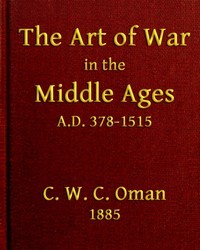
The Art of War in the Middle Ages A.D. 378-1515 by Charles Oman
2 notes
·
View notes
Text
SAINTS DECEMBER 01
St. Edmund Campion. Edmund was born in London, the son of a bookseller. He was raised a Catholic, given a scholarship to St. John's College, Oxford, when fifteen, and became a fellow when only seventeen. His brilliance attracted the attention of such leading personages as the Earl of Leicester, Robert Cecil, and even Queen Elizabeth. He took the Oath of Supremacy acknowledging Elizabeth head of the church in England and became an Anglican deacon in 1564. Doubts about Protestantism increasingly beset him, and in 1569 he went to Ireland where further study convinced him he had been in error, and
he returned to Catholicism. Forced to flee the persecution unleashed on Catholics by the excommunication of Elizabeth by Pope Pius V, he went to Douai, France, where he studied theology, joined the Jesuits, and then went to Brno, Bohemia, the following year for his novitiate. He taught at the college of Prague and in 1578 was ordained there. He and Father Robert Persons were the first Jesuits chosen for the English mission and were sent to England in 1580. His activities among the Catholics, the distribution of his rations at the University Church in Oxford, and the premature publication of his famous Brag (which he had written to present his case if he was captured) made him the object of one of the most intensive manhunts in English history. He was betrayed at Lyford, near Oxford, imprisoned in the Tower of London, and when he refused to apostatize when offered rich inducements to do so, was tortured and then hanged, drawn, and quartered at Tyburn on December 1 on the technical charge of treason, but in reality because of his priesthood. He was canonized by Pope Paul VI in 1970 as one of the forty English and Welsh Martyrs.
Bl. Alexander Briant, 1581 A.D. Missionary and martyr, one of the English priests slain in the reign of Queen Elizabeth I. Alexander was born in Somerset, England, circa 1556 , and entered Oxford University at a young age. He was called "the beautiful Oxford youth" because of his handsome appearance and
the radiance of his holiness. Alexander converted to Catholicism at Oxford and met Richard Holtby, following Holtby to the English seminary college at Reims, France. He was ordained a priest there on March 29, 1578. Returning to England, Alexander worked in Somerset and was caught up in a search by British authorities in April 1581. Taken to the Tower of London, he was subjected to inhuman tortures but did not reveal the names of other priests. He also wrote to the Jesuit Fathers, asking permission to join. He was accepted. In November 1581, he was condemned to death by an English court. Again Alexander suffered hideous tortures and died on December 1, 1581, at the age of twenty-five.
Bl. John Beche, 1539 A.D Martyr of England and a friend of St. John Fisher and St. Thomas More. John was abbot of Coichester Abbey. Benedictine, he received a doctorate from Oxford in 1515. He took the Oath of Supremacy in 1534, but then saw his own abbey being plundered. The deaths of Sts. John Fisher and Thomas More horrified him as well. When he refuted King Henry VIII’s right to suppress the English monasteries, he was arrested for treason and hanged, drawn, and quartered at Colchester. John was beatified in 1895.
Bl. Richard Langley, 1586 A.D. English martyr. A member of the gentry, he was born at Grimthorpe, where he had extensive estates, as he did in Riding. He was arrested for giving shelter to Catholic priests and hanged, drawn, and quartered at York on December 1. He was beatified in 1929.
St. Grwst, 7th century. A Welsh saint honored at Llanrwst, Clwyd, Wales.
St. Natalia of Nicomedia, Roman Catholic Martyr of Nicomedia, modem Turkey She cared for Christian prisoners awaiting martyrdom during the persecutions of Emperor Diocletian.Dec 1
Bl. Anwarite Nangapeta, Roman Catholic Nun. She was killed during Congo's civil war at the Simba revolt in 1964 by a soldier, Colonel Pierre Colombe, when she resisted his attempted rape.Dec. 1
Blessed Charles Eugène de Foucauld was a French Roman Catholic religious and priest living among the Tuareg in the Sahara in Algeria. He was assassinated in 1916 outside the door of the fort he built for the protection of the Tuareg. Dec.1
ST. NAHUM, PROPHET
St. Nahum the Prophet St. Nahum the Prophet Around 612 BC, the minor prophet Nahum prophesied against Nineveh, the capital of the Assyrian empire. Assyria had conquered and cruelly ruled much of the Middle East for 300 years, and in 622 conquered the northern Kingdom of Israel and deported its people. Dec 1
0 notes
Text
Thy kingdom come
"The Way of Perfection"
of
St Teresa of Ávila
[ 1515 - 1582 A.D. ]
Eternal Wisdom! Between you and your Father this was quite sufficient. This is how you made your request of him in the garden of Gethsemane. You showed him what you wished for and what you feared, but left it all in his hands. But you know us, my Lord, and you know that we have not given ourselves up to the will of your Father as completely as you did. For us, it is best to pray for specific things, so that as each of them comes to mind we can pause to consider whether it is something good that we are asking for; so that if it is not, we should refrain from asking for it. Otherwise (being what we are, free will and all) we will not accept what God chooses to give us even if it is far better than what we asked for, simply because it is not exactly what we asked for. We are the sort of people who cannot feel rich unless we feel the weight of the actual coins in our hand.What person, however careless, who had to address someone of importance, would not spend time in thinking how to approach him so as to please him and not be considered tedious? He would also think what he was going to ask for and what use he would make of it, especially if his petition were for some particular thing, as our good Jesus tells us our petitions must be. This point seems to me very important. Could you not, my Lord, have ended this prayer in a single sentence, by saying: “Give us, Father, whatever is good for us”? For, in addressing One Who knows everything, there would seem to be no need to say any more. Now the good Jesus bids us say these words, in which we pray that the Kingdom may come in us: Hallowed be thy name, thy Kingdom come. See how great our Master’s wisdom is! I am thinking of what it is we are asking for when we ask for the Kingdom: it is important that we should understand this. His Majesty saw that because of our weakness we could not hallow or praise or magnify or glorify the holy name of the Eternal Father in a way adequate to its greatness. We could not, that is, do it by ourselves, if His Majesty did not help us by giving us his kingdom here on earth. And so the good Jesus places these two petitions – Hallowed be thy name and Thy kingdom come next to each other, so that we can understand what we are asking for and why it is important to beg for it and to do all we can to please the one who is able to give it to us. Let me explain how I understand it. Now, then. The greatest joy in the kingdom of heaven (the greatest among many) seems to me to be that we will no longer be tied up with earthly concerns but will have rest and glory within us – rejoicing that gives joy to everyone, peace that lasts for ever – satisfaction in ourselves, a satisfaction that comes from seeing how everyone is praising the Lord and blessing and hallowing his name, while no-one offends him. Everyone loves him. Each soul has no wish other than to love him: it cannot stop loving him because it knows him truly. If only we knew him like that even here on earth, we would love him in the same way – not with that degree of perfection, of course, but in a very different way from the way we love him now.
0 notes